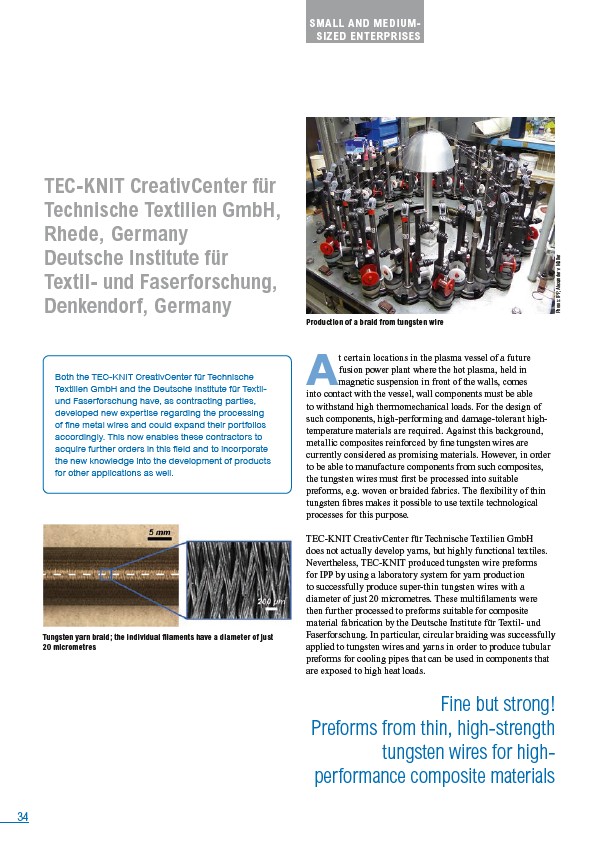
34
At certain locations in the plasma vessel of a future
fusion power plant where the hot plasma, held in
magnetic suspension in front of the walls, comes
into contact with the vessel, wall components must be able
to withstand high thermomechanical loads. For the design of
such components, high-performing and damage-tolerant hightemperature
materials are required. Against this background,
metallic composites reinforced by fine tungsten wires are
currently considered as promising materials. However, in order
to be able to manufacture components from such composites,
the tungsten wires must first be processed into suitable
preforms, e.g. woven or braided fabrics. The flexibility of thin
tungsten fibres makes it possible to use textile technological
processes for this purpose.
TEC-KNIT CreativCenter für Technische Textilien GmbH
does not actually develop yarns, but highly functional textiles.
Nevertheless, TEC-KNIT produced tungsten wire preforms
for IPP by using a laboratory system for yarn production
to successfully produce super-thin tungsten wires with a
diameter of just 20 micrometres. These multifilaments were
then further processed to preforms suitable for composite
material fabrication by the Deutsche Institute für Textil- und
Faserforschung. In particular, circular braiding was successfully
applied to tungsten wires and yarns in order to produce tubular
preforms for cooling pipes that can be used in components that
are exposed to high heat loads.
Fine but strong!
Preforms from thin, high-strength
tungsten wires for highperformance
composite materials
Photos: IPP, Alexander v. Müller
SMALL AND MEDIUM-
SIZED ENTERPRISES
Production of a braid from tungsten wire
TEC-KNIT CreativCenter für
Technische Textilien GmbH,
Rhede, Germany
Deutsche Institute für
Textil- und Faserforschung,
Denkendorf, Germany
Both the TEC-KNIT CreativCenter für Technische
Textilien GmbH and the Deutsche Institute für Textil-
und Faserforschung have, as contracting parties,
developed new expertise regarding the processing
of fine metal wires and could expand their portfolios
accordingly. This now enables these contractors to
acquire further orders in this field and to incorporate
the new knowledge into the development of products
for other applications as well.
Tungsten yarn braid; the individual filaments have a diameter of just
20 micrometres